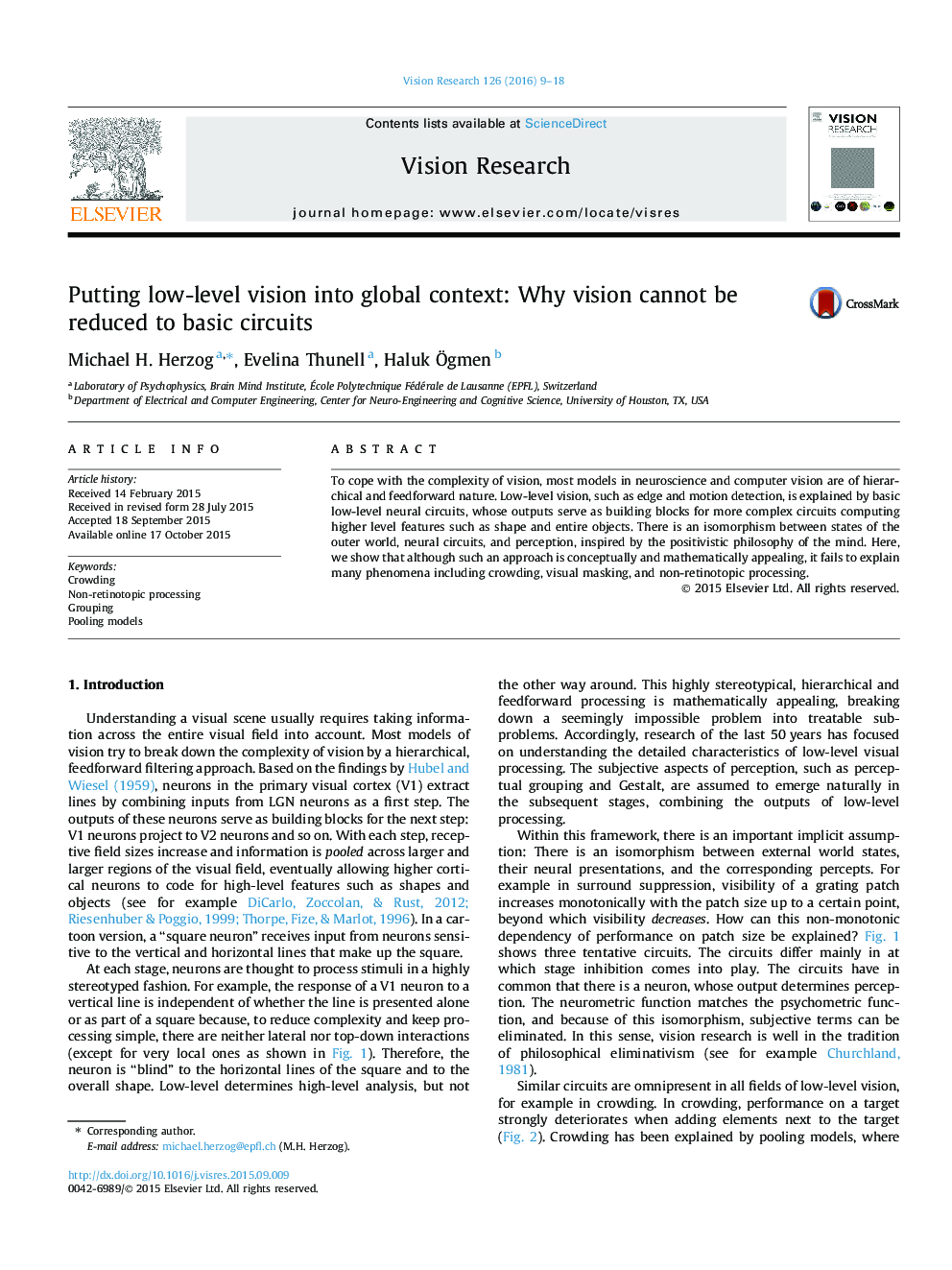| کد مقاله | کد نشریه | سال انتشار | مقاله انگلیسی | نسخه تمام متن |
|---|---|---|---|---|
| 6202895 | 1603173 | 2016 | 10 صفحه PDF | دانلود رایگان |
• Vision cannot reduced to basic circuits.
• Visual acuity of an element depends on the overall stimulus configuration.
• Low-level processing depends on high-level processing as much as the other way around.
To cope with the complexity of vision, most models in neuroscience and computer vision are of hierarchical and feedforward nature. Low-level vision, such as edge and motion detection, is explained by basic low-level neural circuits, whose outputs serve as building blocks for more complex circuits computing higher level features such as shape and entire objects. There is an isomorphism between states of the outer world, neural circuits, and perception, inspired by the positivistic philosophy of the mind. Here, we show that although such an approach is conceptually and mathematically appealing, it fails to explain many phenomena including crowding, visual masking, and non-retinotopic processing.
Journal: Vision Research - Volume 126, September 2016, Pages 9–18
